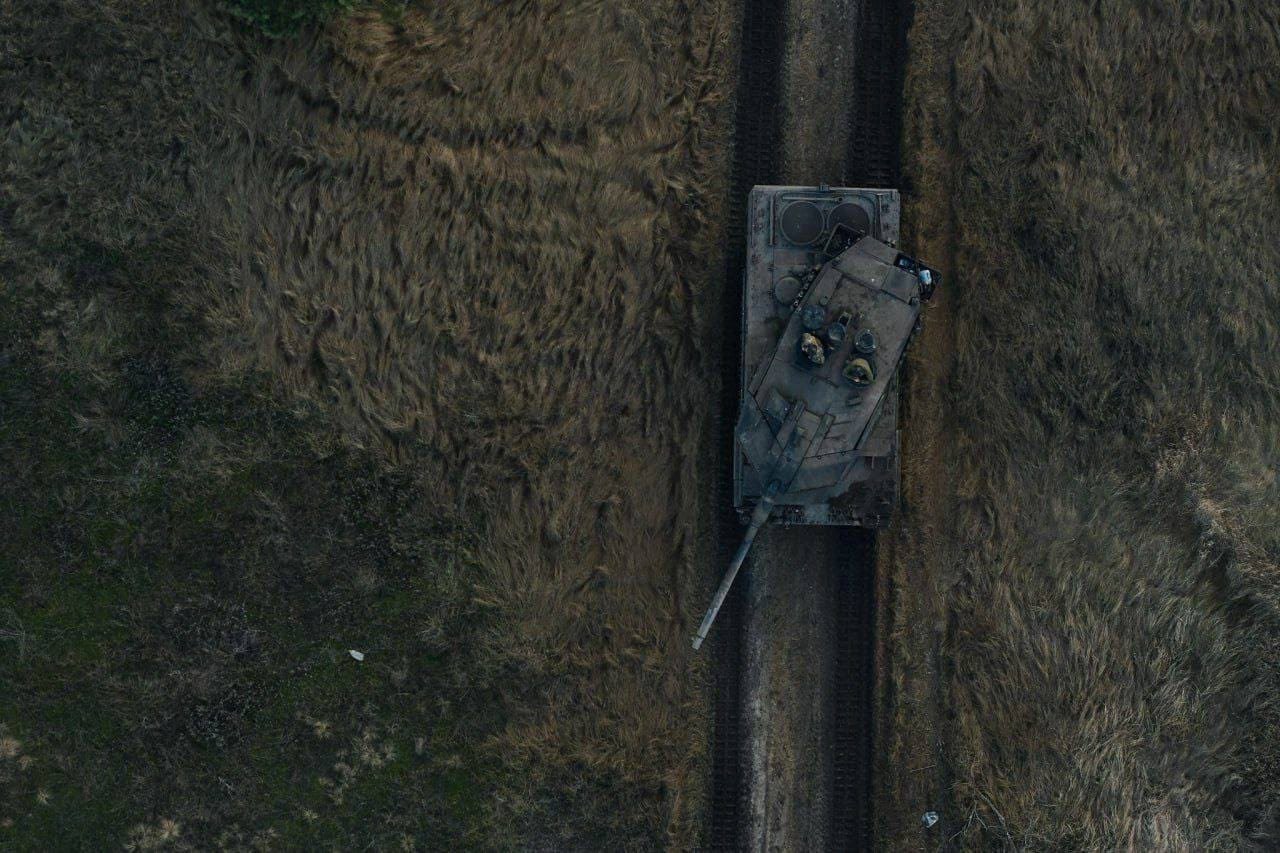In the ongoing conflict in Ukraine, the introduction of the German Leopard 2A6 tanks has marked a significant shift in the dynamics of armored warfare on the battlefield. Originally developed by Krauss-Maffei in the 1970s, the Leopard 2A6 is a third-generation main battle tank that entered service in 1979, replacing the Leopard 1. Its deployment to Ukraine represents a substantial upgrade in terms of technology and capabilities compared to the tanks previously available to Ukrainian forces.

Specifications of the Leopard 2A6
• Dimensions: Length of 9.97 meters, width of 3.75 meters, height of 3 meters, and a crew capacity of four.
• Armor: 3rd generation composite, including high-hardness steel, tungsten, plastic filler, and ceramic components.
• Armament: Equipped with either a 120mm Rh-120 L/44 or L/55 smoothbore cannon, and secondary armament of two 7.62mm MG3A1 or FN MAG machine guns.
• Engine: Powered by an MTU MB 873 Ka-501 liquid-cooled V12 twin-turbo diesel engine, delivering 1100 kW at 2600 rpm.
• Performance: Maximum speed of 70 km/h, operational range of up to 340 km on roads, and 220 km cross-country.

The Leopard 2A6, a third-generation main battle tank developed by Krauss-Maffei, is a substantial upgrade over its predecessors and other tanks in its class. It measures 9.97 meters in length (with the gun forward), 3.75 meters in width, and 3 meters in height, accommodating a crew of four. The tank’s armor is a composite of high-hardness steel, tungsten, and plastic filler with a ceramic component, providing enhanced protection against various types of projectiles.
The main armament of the Leopard 2A6 is a 120 mm Rheinmetall smoothbore cannon, either the Rh-120 L/44 or the longer L/55 model, capable of firing a variety of ammunition types. Additionally, it is equipped with secondary armament in the form of two 7.62 mm machine guns. The tank’s engine is an MTU MB 873 Ka-501 liquid-cooled V12 twin-turbo diesel engine, producing 1100 kW at 2600 rpm. This power allows the Leopard 2A6 to achieve a maximum speed of 70 km/h and an operational range of approximately 340 km on roads and 220 km cross-country .
Impact and Deployment in Ukraine
The deployment of the Leopard 2A6 tanks in Ukraine marks a significant shift in the country’s armored capabilities. Germany, in collaboration with other European allies, has committed to sending at least eighty Leopard 2A6 tanks to Ukraine, with the potential to increase this number to as many as 112. This influx of modern, highly capable tanks is anticipated to significantly influence the balance of power in the ongoing conflict.

The Leopard 2A6s are part of a broader commitment from Western nations, including the United States and the United Kingdom, who have pledged the M1A2 Abrams and Challenger 2 tanks, respectively. The introduction of these advanced tanks represents not just a quantitative but a qualitative change in the armored capabilities of Ukraine, potentially altering the trajectory of the conflict.
However, the timeline for the delivery and deployment of these tanks is a critical factor. The effectiveness of the Leopard 2A6 tanks in the conflict depends significantly on their timely arrival and integration into Ukraine’s military operations .
Challenges and Considerations

While the Leopard 2A6 tanks bring advanced capabilities, they also introduce several challenges. These tanks are complex systems that require specialized training for the crews and a robust support and maintenance infrastructure. The training and upkeep of these tanks are time-intensive processes, with intricate fire-control systems, laser rangefinders, and reactive armor needing regular maintenance and calibration.
Moreover, integrating these tanks into Ukraine’s logistical framework presents its challenges. Ensuring a steady supply of unique parts and ammunition, and maintaining a functional supply line are pivotal for the operational success of these tanks. The logistical aspects, including the transportation of the tanks to Ukraine and the distribution of necessary supplies, play a crucial role in determining their impact on the battlefield.
Additionally, the introduction of Leopard 2A6 tanks necessitates adjustments in Ukraine’s combat strategies and tactics. The tanks’ advanced systems require a different approach to armored warfare, necessitating adaptations in tactics and coordination with other military elements.
In summary, while the Leopard 2A6 tanks are a significant upgrade for Ukraine’s armed forces, their overall effectiveness will hinge on the successful integration of these tanks into the existing military structure, coupled with effective training, maintenance, and logistical support .
The introduction of Leopard 2A6 tanks to Ukraine’s military arsenal marks a major advancement in its capabilities, potentially altering the course of the ongoing conflict. These tanks’ advanced technology and firepower provide Ukraine with a much-needed boost in its defense efforts. However, the success of this deployment hinges on overcoming logistical and training challenges, ensuring the tanks are effectively integrated into Ukraine’s military strategy. The ultimate impact of these tanks on the battlefield will be a crucial factor in determining the balance of power in the conflict.























+ There are no comments
Add yours